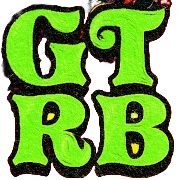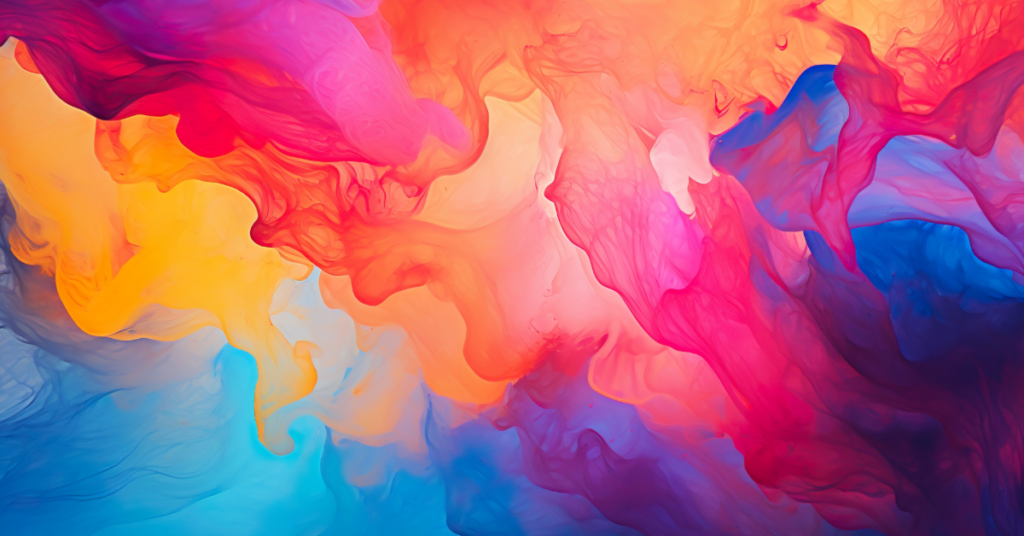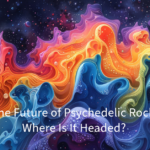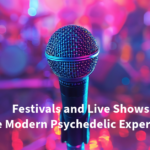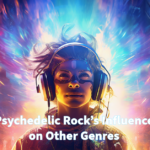It’s the summer of 1967, and the city of San Francisco is buzzing with an energy unlike anything seen before. Thousands of young people from across the country have flocked to the Haight-Ashbury district, drawn by the promise of love, peace, and a new way of life. The streets are filled with vibrant colors, the air is thick with the scent of patchouli, and the sounds of psychedelic rock provide the perfect soundtrack to this cultural revolution. This is the Summer of Love—a defining moment in the history of psychedelic rock.
Iconic Festivals and Concerts
As psychedelic rock reached its zenith, live performances became an essential part of the experience. The music wasn’t just something to be listened to; it was something to be felt, something that could transport you to another world. This was evident in the iconic festivals and concerts that defined the era.
The Monterey Pop Festival, held in June 1967, was one of the first major rock festivals and a pivotal moment for psychedelic rock. With performances by Jimi Hendrix, Janis Joplin, The Who, and Jefferson Airplane, Monterey Pop showcased the best of the psychedelic scene to a wide audience. Hendrix’s performance, in particular, became the stuff of legend—his rendition of “Wild Thing,” complete with guitar-burning theatrics, left an indelible mark on the history of rock music.
Woodstock, held in August 1969, was another defining moment. While not exclusively a psychedelic rock festival, Woodstock brought together a diverse group of musicians and fans, all united by a shared sense of purpose and a desire for peace. The performances by artists like Jimi Hendrix, The Grateful Dead, and Santana captured the spirit of the era, blending rock with improvisation and experimentation in a way that was quintessentially psychedelic.
Landmark Albums
The late 1960s were a period of unparalleled creativity in psychedelic rock, with artists releasing albums that would go on to become timeless classics. Jimi Hendrix’s Are You Experienced (1967) continued to dominate the scene, but it was his 1968 album Electric Ladyland that truly cemented his status as a musical genius. With tracks like “Voodoo Child (Slight Return)” and “All Along the Watchtower,” Hendrix pushed the boundaries of what could be done with an electric guitar, creating a sound that was both powerful and otherworldly.
The Beatles, meanwhile, continued their psychedelic journey with Magical Mystery Tour (1967), an album that featured some of their most experimental work, including the surreal “I Am the Walrus” and the hypnotic “Strawberry Fields Forever.” The album’s accompanying film, while not well-received at the time, has since become a cult classic, further solidifying The Beatles’ role as pioneers of psychedelic rock.
The Doors, with their 1967 debut and subsequent albums like Strange Days (1967) and Waiting for the Sun (1968), continued to explore the darker side of psychedelia. Jim Morrison’s haunting lyrics and the band’s unique blend of blues, rock, and Eastern influences created a sound that was both mesmerizing and unsettling.
Pink Floyd, who had emerged as one of the leading psychedelic bands in the UK, released A Saucerful of Secrets (1968) and Ummagumma (1969), albums that showcased their ability to blend spacey, atmospheric soundscapes with experimental, avant-garde compositions. These albums laid the groundwork for the progressive rock movement that would soon follow, but they also stood as testament to the creative heights that psychedelic rock could reach.
Experimentation with Sound and Lyrics
Psychedelic rock was defined by its willingness to experiment with both sound and lyrics. Artists were no longer confined to traditional song structures or themes; instead, they embraced the idea that music could be a vehicle for exploring the inner workings of the mind and the mysteries of the universe.
The Beatles’ “A Day in the Life,” from Sgt. Pepper’s Lonely Hearts Club Band (1967), is a prime example of this experimentation. The song’s complex structure, which shifts between dreamy verses and an orchestral crescendo, was unlike anything heard before. The lyrics, which touch on themes of alienation and the mundane horrors of everyday life, were a far cry from the simple love songs of the early 1960s.
The Doors’ “The End,” with its epic length and dark, Oedipal lyrics, pushed the boundaries of what rock music could express. Morrison’s use of spoken word, combined with the band’s eerie, Eastern-influenced instrumentation, created a track that was both disturbing and deeply compelling.
Jefferson Airplane’s “White Rabbit,” with its references to Lewis Carroll’s Alice in Wonderland, used surreal imagery to explore the mind-altering effects of psychedelic drugs. The song’s crescendo, driven by a relentless drumbeat and Grace Slick’s commanding vocals, became an anthem for the counterculture movement.
Cultural Impact and Legacy
By the late 1960s, psychedelic rock was more than just a genre of music; it was a cultural phenomenon. The music, with its emphasis on exploration and breaking boundaries, mirrored the broader social changes of the time. The counterculture movement, with its rejection of traditional values and embrace of new ideas, found its voice in the swirling, mind-bending sounds of psychedelic rock.
The influence of psychedelic rock extended far beyond music. It could be seen in the vibrant, colorful art of the era, from the swirling, abstract patterns of concert posters to the psychedelic imagery of album covers. It influenced fashion, with the bright colors, flowing fabrics, and eclectic styles of the time reflecting the free-spirited ethos of the psychedelic movement.
Even as the 1960s came to a close, the impact of psychedelic rock continued to be felt. The genre had pushed the boundaries of what rock music could be, laying the groundwork for the development of progressive rock, hard rock, and even heavy metal in the 1970s.
The Pinnacle of Psychedelia
The years between 1967 and 1969 represented the peak of psychedelic rock—a time when the genre was at its most innovative, influential, and culturally significant. Legendary festivals, iconic performances, and groundbreaking albums all contributed to a moment in history when music was more than just entertainment; it was a way of life.
As we move into the next part of this series, we’ll explore how psychedelic rock began to decline and transform in the early 1970s, giving way to new genres and sounds while leaving a lasting legacy that continues to resonate today. The high may be coming down, but the journey is far from over.
